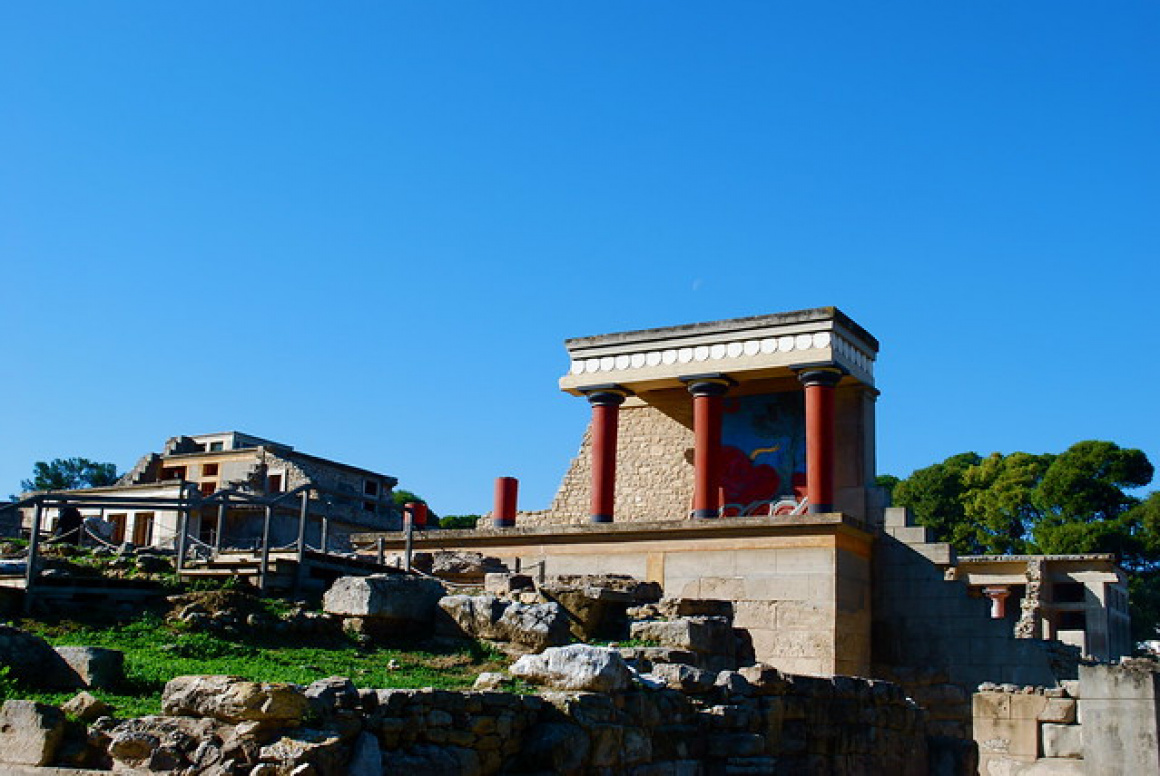Introduction
Crete is a land of myths and marvels, where ancient palaces, vibrant towns, and breathtaking landscapes converge on Greece's largest island. As the fifth-largest island in the Mediterranean (spanning ~260 km east to west), Crete offers an abundance of attractions – from Minoan ruins and Venetian harbours to hidden beaches and mountain villages. This travel guide will walk you through the top things to do in Crete, must-see landmarks, and insider gems, so you know exactly where to go on this incredible island. (And don't worry about getting around – if you plan to explore beyond the main cities, check out Car Hire in Crete tips for the best way to roam free.) With a mix of cultural highlights, natural wonders, and personal anecdotes, let's dive into what makes Crete travel so special.
Ancient History and Archaeological Sites
The partially restored North Entrance of Knossos Palace, one of Crete's most iconic archaeological sites, invites you to step into Crete's 4,000-year history by visiting its extraordinary archaeological treasures. The Palace of Knossos near Heraklion is a must-see attraction – it was the monumental centre of Minoan civilisation and is considered Europe's oldest city. Walking through Knossos, you'll see grand courtyards, royal chambers, and vibrant frescoes (like the famous bull-leaping fresco) that hint at the splendour of this Bronze Age palace. In fact, Knossos was the largest of the Minoan palatial sites, spanning about 5 acres, and is tied to the myth of King Minos and the Minotaur in the Labyrinth.
Beyond Knossos, history enthusiasts should not miss Phaistos, the second-largest Minoan palace on Crete, where the mysterious Phaistos Disc was discovered. Its hilltop ruins overlook the Messara plain, offering a stunning view along with a dose of legend. Other notable ancient sites include Malia (another Minoan palace with impressive courts) and the archaeological site of Gortyna, which boasts a Roman-era amphitheatre and the famous law code inscribed on stone. For a hauntingly beautiful experience, take a boat to Spinalonga Island in the Gulf of Elounda – once a Venetian fortress, it later became the last leper colony in Europe. Walking the crumbling fortress walls of Spinalonga Island and its deserted stone houses is both fascinating and poignant. After your historical explorations, you can unwind at a nearby hotel – for example, GDM Megaron in Heraklion is a highly-rated option that offers modern luxury in a restored landmark building, perfect for relaxing after a day at Knossos.
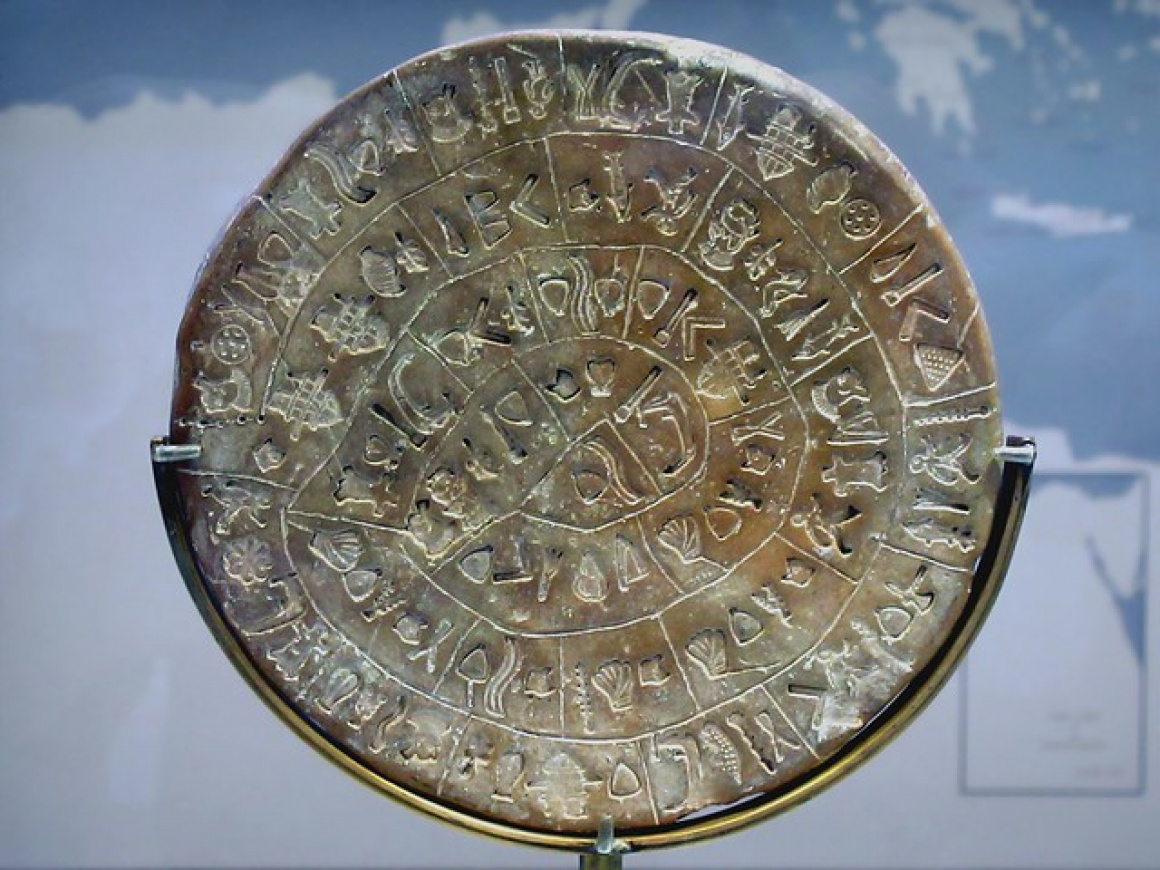
 'Phaistos Disc' - Attribution: D-Stanley
'Phaistos Disc' - Attribution: D-StanleyCharming Towns and Cultural Experiences
Crete's cities and villages are brimming with charm and local culture. Start with Chania, often called the most beautiful town in Crete. In Chania's Old Town, you'll wander through narrow pedestrian lanes lined with colourful Venetian and Ottoman-era buildings that now house boutiques and tavernas. The postcard-perfect Chania Venetian Harbour is especially magical at dusk, when the 16th-century lighthouse and mosque glow in the sunset. Enjoy a seaside stroll and perhaps dine on fresh seafood by the water. For a memorable stay in Chania, consider a boutique hotel like Casa Delfino, a historic mansion turned 5-star hotel that consistently earns rave reviews and offers a rooftop view over the harbour.

 'Chania Venetian Harbour' - Attribution: Miguel Virkkunen Carvalho
'Chania Venetian Harbour' - Attribution: Miguel Virkkunen CarvalhoIn Rethymno, another coastal gem, you'll find a charming Old Town with a well-preserved Venetian Fortezza (fortress) and a maze of lanes filled with Renaissance architecture. Rethymno's atmosphere is romantic and laid-back – perfect for an evening of wandering and finding a tucked-away wine bar. Don't miss the Rimondi Fountain and the Neratze Mosque (now a music hall) as you explore. If you're intrigued by local tradition, pop into a folklore shop or workshop. Rethymno is known for handcrafted leather sandals and intricate lacework made by locals.
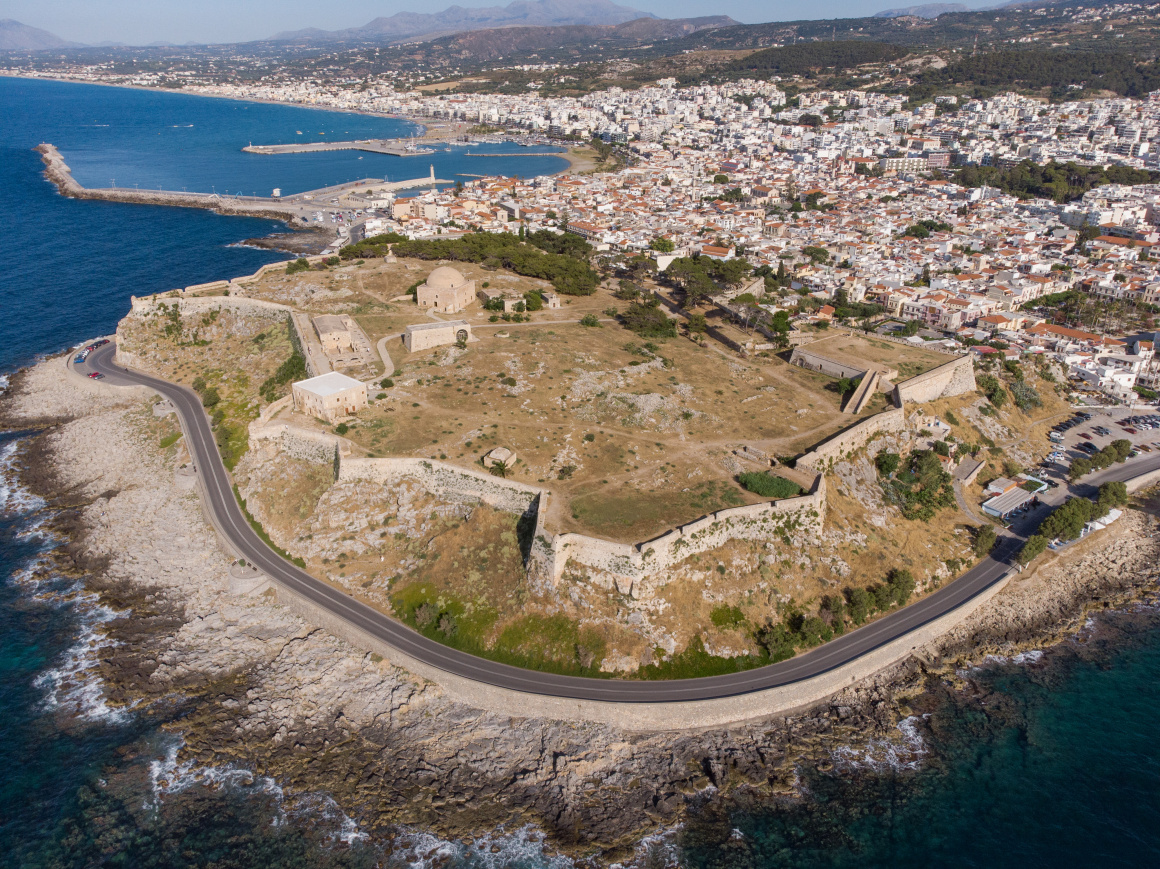
 'This is a photo of a monument in Greece identified by the ID' - Attribution: C messier
'This is a photo of a monument in Greece identified by the ID' - Attribution: C messierHeraklion, Crete's largest city and capital, offers a mix of busy urban energy and historical sights. After visiting Knossos (just outside the city), spend time at the Heraklion Archaeological Museum, which showcases stunning Minoan artefacts including the original frescoes from Knossos and the enigmatic Phaistos Disc. Stroll along the pedestrianised 25th of August Street from Lion's Fountain down to the old harbour, where you can explore the Venetian Koules Fortress guarding the port. The city's waterfront has plenty of cafes – grab a Greek coffee and watch daily life unfold. Heraklion also makes a great base for day trips to nearby wineries or the hillside village of Archanes (known for wine and ancient history). If you stay in Heraklion, centrally located hotels like GDM Megaron or Aquila Atlantis provide comfort and harbour views.
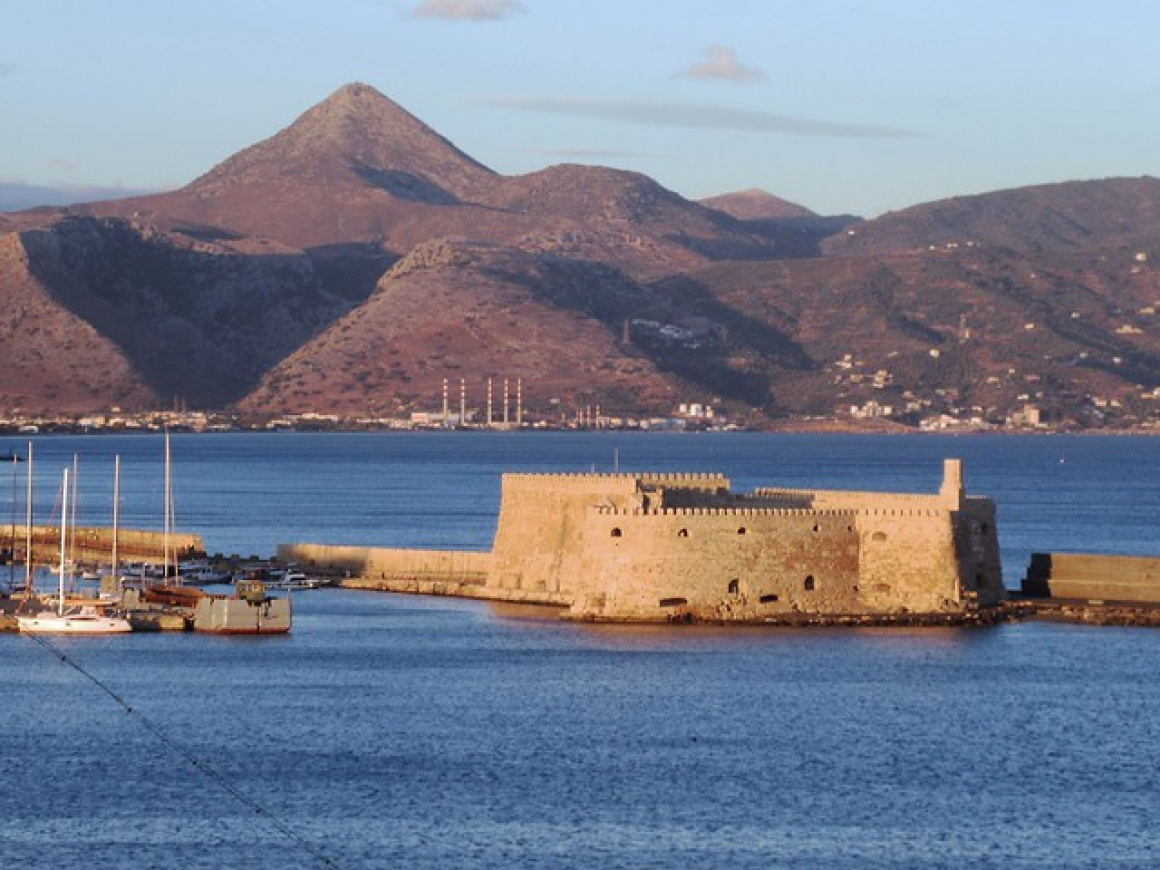
 'Koules Fortress' - Attribution: D-Stanley
'Koules Fortress' - Attribution: D-StanleyTo truly experience Cretan culture, venture into some of the traditional villages inland. In the rustic village of Anogeia on the slopes of Mount Psiloritis, you can hear soulful Cretan lyra music and see loom-woven textiles made by hand. Or visit Vamos in the Apokoronas region, where old stone houses have been restored for agrotourism – a great place to take a cooking class or taste local olive oil. Many villages host lively panigyria (festivals) on saints' days in summer, featuring hours of music, dancing, and communal feasting. As a visitor, you'll be welcomed with genuine hospitality.
Beaches and Natural Wonders (Balos, Samaria & More)
Crete is famous for its beaches and natural beauty, offering everything from exotic lagoons to dramatic gorges. On the western coast, you'll find Balos Lagoon and Elafonissi Beach, two of the island's most stunning seaside landscapes. An aerial view of Balos Lagoon, where turquoise waters meet white and pink sands in a remote corner of north-west Crete, is truly breathtaking. Balos is a jaw-dropping turquoise lagoon with shallow, crystal-clear water and powdery white sand tinted pink by crushed shells. You can reach Balos by boat from Kissamos or by driving a rough scenic road (and hiking down a path) – either way, the panorama of the lagoon and the island of Gramvousa will leave you speechless. Elafonissi Beach, on Crete's south-western tip, is another slice of paradise often ranked among the world's top beaches. In fact, Elafonissi was just named the best beach in the world in 2025, celebrated for its calm, clear waters and picture-perfect pink sands. This dreamy beach is actually a small islet connected by a shallow sandbar, you can wade through warm knee-deep water to explore different coves. Despite its popularity, Elafonissi still feels like a tropical escape on a quiet day, especially if you visit in May or late September when crowds are fewer.
Crete's natural highlights aren't only along the coast. The island's interior boasts rugged mountain ranges and deep gorges that are a playground for hikers and nature lovers (for a deeper dive into Crete's landscapes and wildlife, see our dedicated Nature in Crete page). The most famous hike is the Samaria Gorge, a 16 km canyon that is the longest gorge in Europe. Trekking down Samaria National Park from the trailhead at Omalos, you'll descend from pine forests into a narrowing ravine where sheer cliffs tower up to 500–700 m high and at one dramatic point, “the Iron Gates,” the walls close in to just about 3–4 m apart. It's an unforgettable experience emerging at the Libyan Sea in Agia Roumeli after hours of walking amid wild beauty, Along the way you might spot the endemic kri-kri (Cretan wild goats) balancing on the rocks – the gorge has been a protected refuge for these goats since 1962. Other rewarding gorge hikes include Imbros Gorge (a shorter, easier hike with impressive narrow passages) and other scenic gorges hiding waterfalls in lush greenery.
If you prefer gentler nature, visit Lake Kournas, Crete's only freshwater lake, nestled amid hills in the Georgioupolis area – you can pedal-boat on its calm waters and observe ducks and fish. Nature enthusiasts will also enjoy the Botanical Park of Crete near Chania, where you can stroll through gardens of tropical and Mediterranean plants (a lovely option if you're not hiking the wild trails). And wherever you go in Crete's countryside, you'll encounter aromatic herbs like thyme and oregano scenting the air, especially in spring when wildflowers carpet the meadows.

 'Kournas Lake Panorama' - Attribution: gliak00
'Kournas Lake Panorama' - Attribution: gliak00Outdoor Activities and Adventures
For those craving adventure activities, Crete has plenty to offer. The island's varied terrain means you can hike a gorge in the morning, swim or snorkel in the afternoon, and maybe even go mountain biking or rock climbing the next day. Hiking is one of the top things to do – aside from the famous Samaria Gorge trek, there are countless trails in the White Mountains (Lefka Ori) and the Psiloritis (Mt. Ida) range. Guided hiking tours can take you to summit Psiloritis (Crete's highest peak at 2,456 m) for incredible sunrise views, or on a journey through the high plateau of Lasithi with its iconic windmills. The White Mountains alone have over 30 summits above 2,000 m and around 50 gorges, so it's a hiker's paradise. Always set out prepared with proper shoes, water, and perhaps a local guide if you're tackling remote paths.
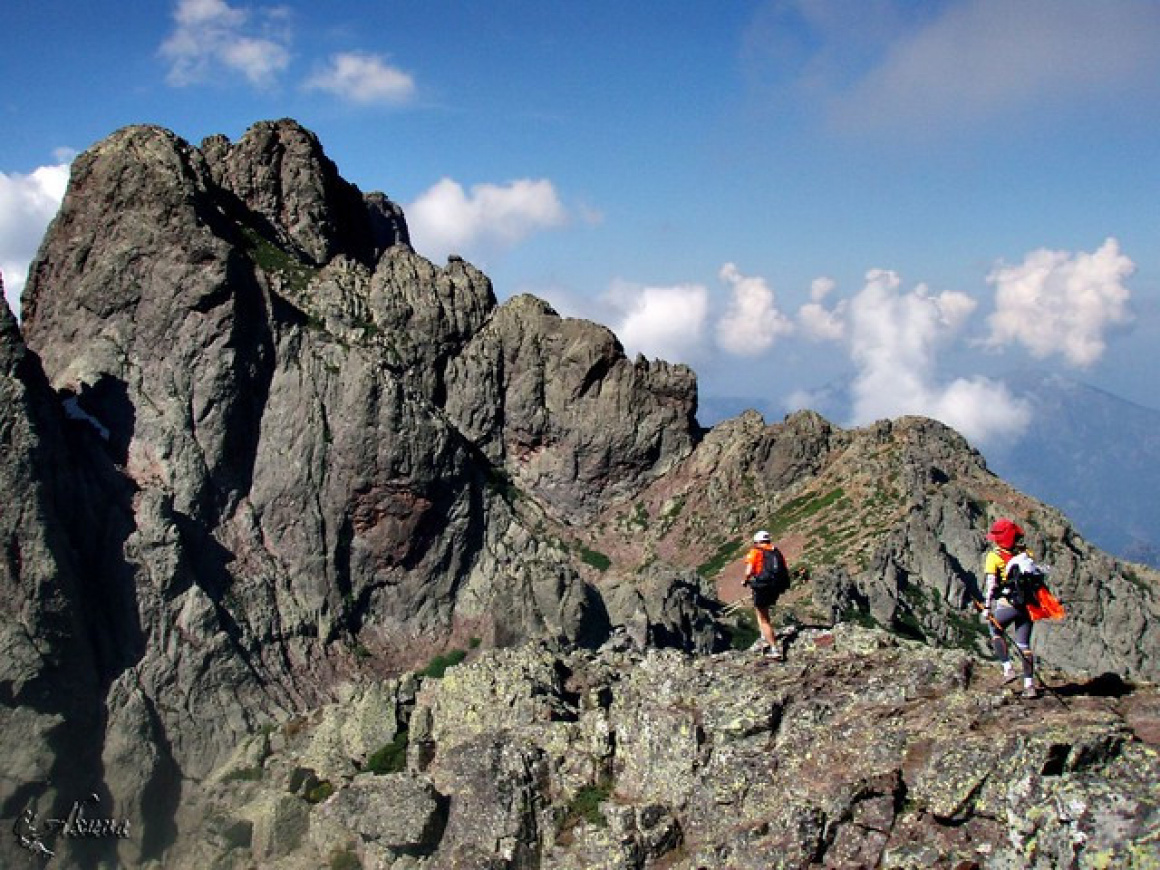
 'GR20 2010 refuge Carrozzu a Tighjettu (59)' - Attribution: akunamatata
'GR20 2010 refuge Carrozzu a Tighjettu (59)' - Attribution: akunamatataCrete's surrounding seas are ideal for water sports. You can go scuba diving or snorkeling in many areas – popular spots include the waters off Agia Pelagia (with rocky reefs and caverns), Skinaria Beach near Plakias in the south (known for clear visibility and sea life), or Elounda in the east (where you can even dive around the ruins of an ancient sunken city at Olous). Several dive centres offer courses or guided dives for both beginners and experienced divers. Windsurfers and kitesurfers should check out Kouremenos Beach on the east coast, which boasts reliable winds, or Falassarna in the west on a windy afternoon. Sea kayaking is another fantastic way to explore – imagine paddling to secluded coves accessible only by water, like the caves of Matala (famous for their Neolithic carved caves and 1960s hippie history) or along the tranquil south coast from Loutro to Sweetwater Beach.
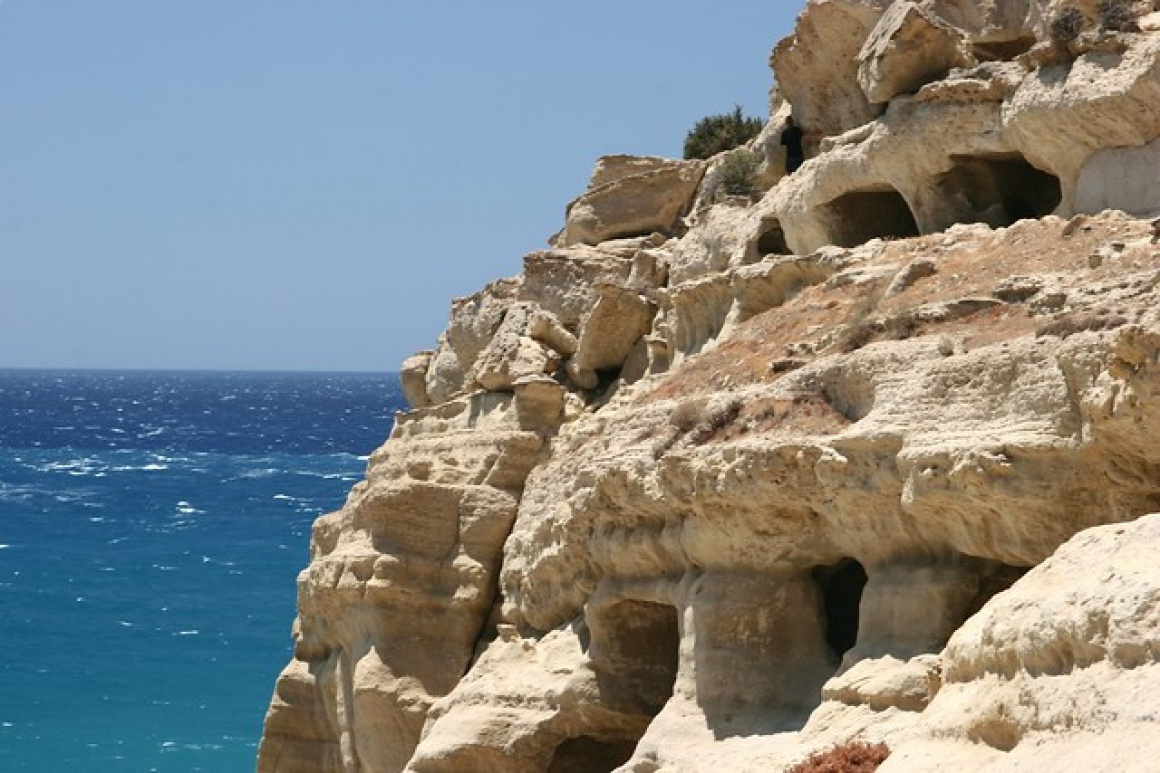
 'Matala I' - Attribution: yashima
'Matala I' - Attribution: yashimaOn land, adventurous travellers can try canyoning (Crete has a number of technical canyons with rappels – best done with an experienced guide) or rock climbing on the limestone cliffs. If you're an adrenaline junkie, there's even bungee jumping off the bridge at Aradena Gorge – a leap into a dramatic chasm. For a more low-key adventure, horseback riding is available in places like Georgioupolis beaches or through olive groves in the countryside. And of course, simply driving around Crete can feel like an adventure (in the best way) – you might wind up on a dirt road leading to a hidden beach or discover a panoramic viewpoint by surprise. (For driving tips and scenic routes, see the Car Hire section of our guide for insights into navigating Crete's roads).

 'Aradena Bridge' - Attribution: Nelo Hotsuma
'Aradena Bridge' - Attribution: Nelo HotsumaHidden Gems and Off-the-Beaten-Path Highlights
One of the joys of Crete is discovering its hidden gems – those lesser-known places that aren't in every guidebook but leave a lasting impression. Here are a few off-the-beaten-path suggestions to enrich your travels:
- Loutro Village: A tiny whitewashed village on the south coast that is only accessible by boat or on foot (no roads lead here). Loutro sits by a crystal-clear bay and has a peaceful, car-free atmosphere. Come for a day trip from Chora Sfakion or spend a night in a simple seaside guesthouse – by day you can hike to nearby beaches like Glyka Nera or explore Venetian fort ruins, and by night enjoy dinner at a taverna with waves lapping at your feet. It's the definition of a hidden paradise.
- Spili and the Amari Valley: In central Crete, south of Rethymno, lies the lush Amari Valley dotted with traditional villages. Spili is known for its Venetian lion-head fountain spouting spring water in the town square and its array of local craft shops. A drive through this region reveals old churches, terraced farms, and Mt. Kedros looming in the background – a scene of authentic rural Cretan life away from the tourist crowds.
- Preveli Beach and Palm Gorge: This unique beach on the south coast (near Plakias) sits at the mouth of a river flowing through a palm tree forest. After descending a staircase path, you'll find Preveli's sandy cove where you can swim in the sea, then walk upriver under the shade of Cretan date palms. It's like a mini jungle oasis by the Libyan Sea.
- Aradena Gorge & Village: For a dose of history and adventure, visit the abandoned village of Aradena in Sfakia (southwest Crete). It's perched on the edge of the Aradena Gorge, which you can hike down to the sea. An iron bridge spans the gorge – thrilling (and a bit vertigo-inducing) to walk across – and this is where that bungee jump happens in summer. Aradena village itself has crumbling stone houses and a beautiful 14th-century Byzantine church, giving a glimpse into a bygone era.
- Local Wineries and Olive Farms: Crete is famous for its olive oil and has a burgeoning wine scene with several excellent wineries open for visits. Consider a trip to a family-run olive oil farm near Kolymbari or Agioi Apostoloi to learn about olive cultivation (and taste fresh olive oil with rustic bread and tomatoes). Wine lovers can stop by vineyards around Heraklion (Peza region) or Chania (Kissamos region) – many offer tours and tastings. Sipping a chilled Vilana or Vidiano (local white grape varieties) on a terrace overlooking vines is a delightfully off-tourist-track experience.
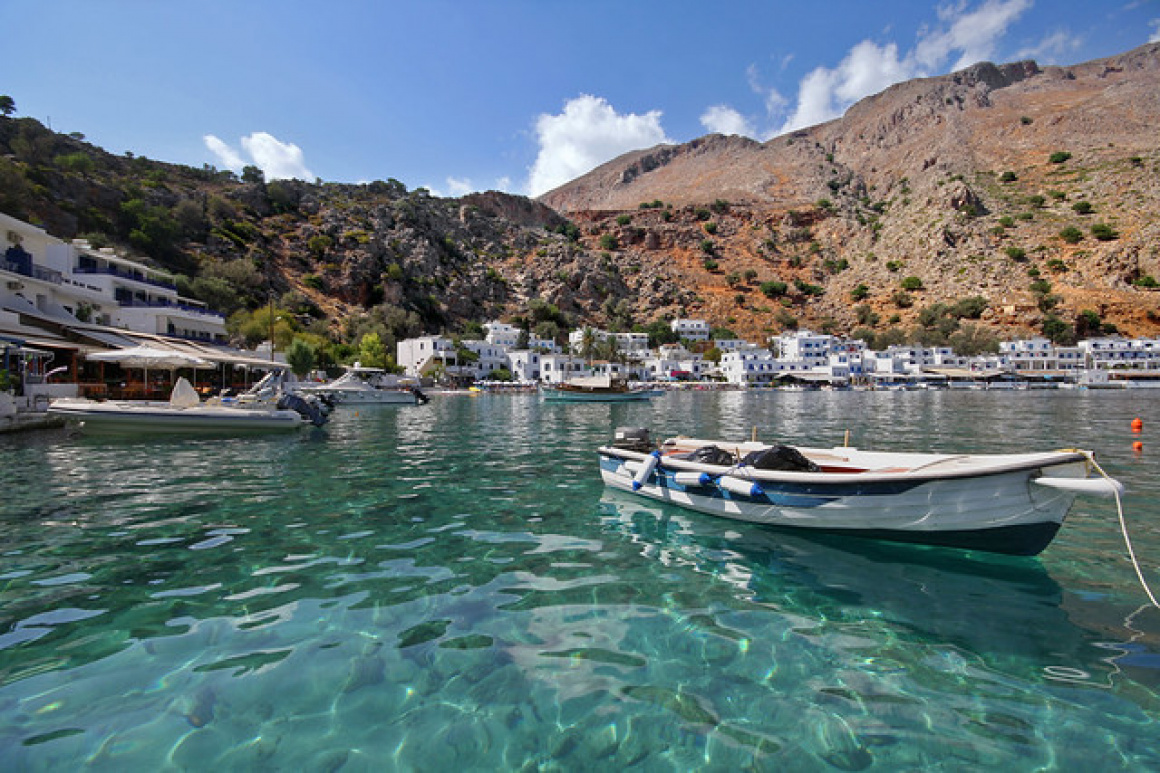
 'Loutro' - Attribution: Miguel Virkkunen Carvalho
'Loutro' - Attribution: Miguel Virkkunen CarvalhoThese hidden gems are easiest reached with your own transport, so having a rental car can be invaluable to unlock corners of Crete that buses don't reach, Many travellers find that hiring a car gives them the freedom to stumble upon quaint villages or secluded coves at their own pace – a scenic detour might lead to your favourite memory of the trip. Keep your curiosity and sense of adventure, and you'll leave with stories and experiences as rich as the island's history.
Crete offers an incredible tapestry of experiences – whether you're a history buff, a beach bum, a foodie, or an adventure seeker, you'll find something special here. In my own journey across Crete, I found that the island's uniqueness lies not just in the famous sites but also in the small moments: a friendly chat with a shopkeeper in Chania, a quiet sunset at a chapel on a hill, the taste of sweet thyme honey after a hike. I hope this guide helps you discover your own favourite things to do in Crete and inspires you to delve into all the must-see sights and secret spots that make this island unforgettable.
Next: Once you've got your itinerary of things to do, check out Car Hire in Crete for advice on renting a car to reach all these places, and dive into Nature in Crete to learn more about the island's great outdoors.

